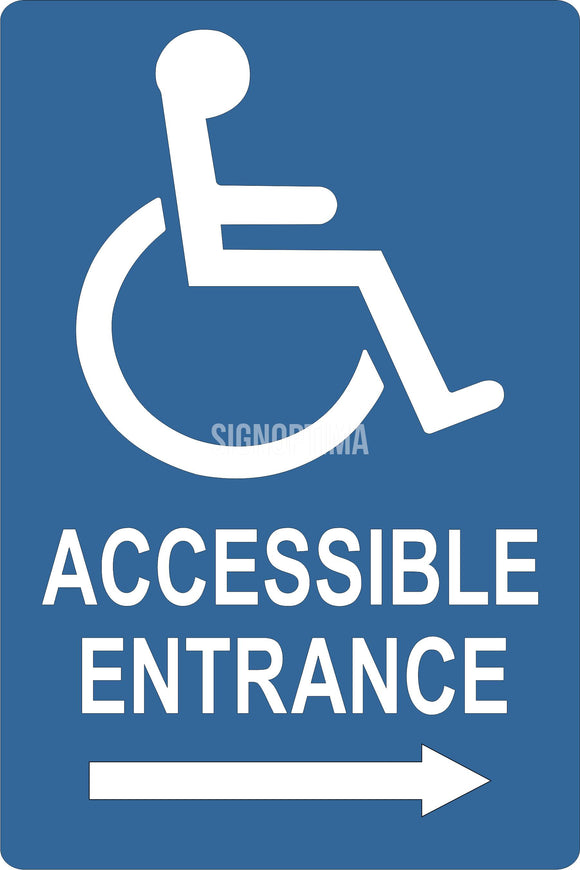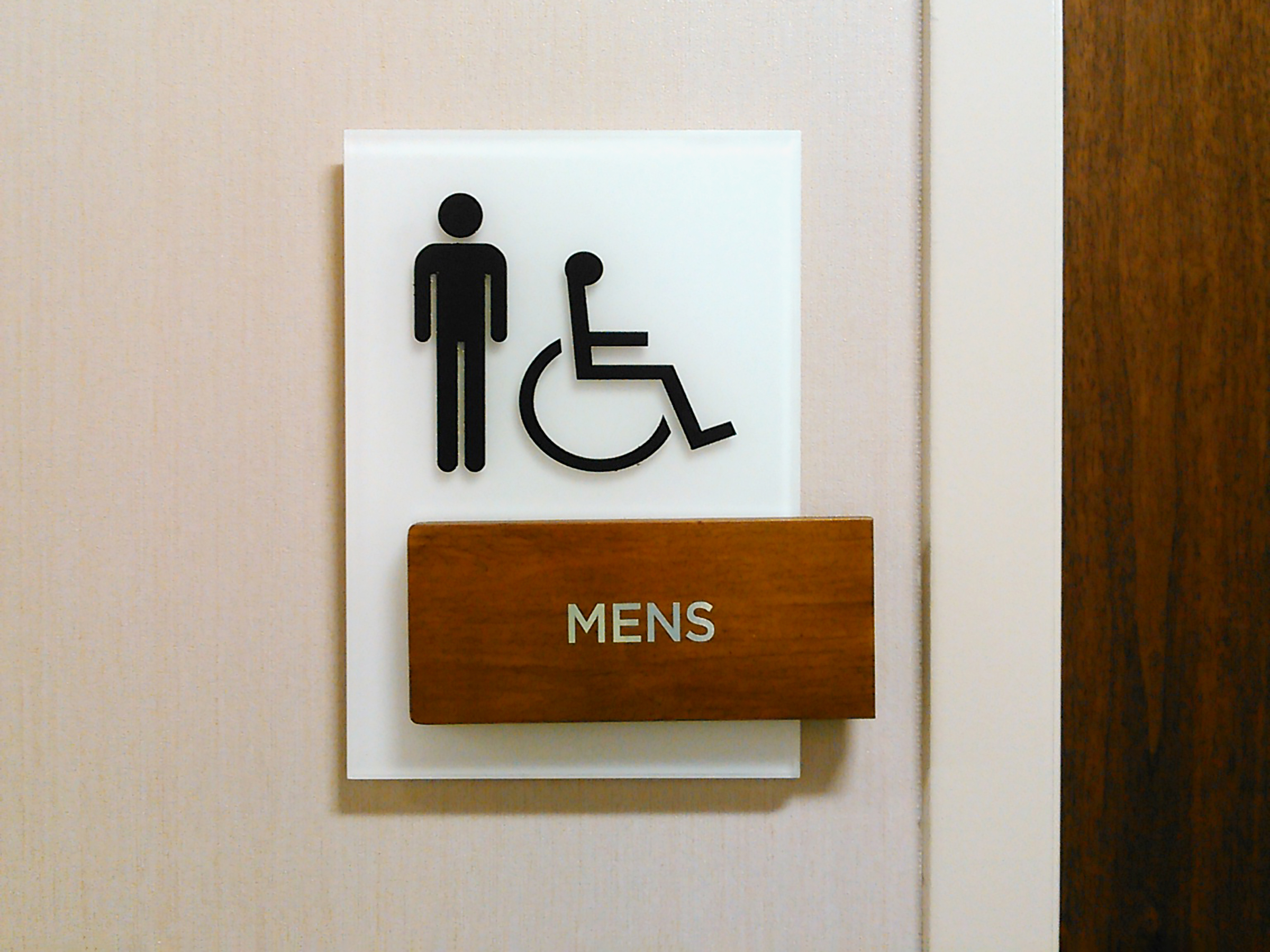ADA Signage: Guaranteeing Accessibility and Conformity in Public Spaces
ADA signs plays an important function in assuring access and compliance within public rooms, substantially contributing to an inclusive environment for people with impairments. By sticking to ADA standards, signage not only helps with navigation however additionally underscores an organization's commitment to diversity and equality. As we check out the subtleties of ADA signs, from responsive functions to make intricacies, it's essential to think about how these components coalesce to copyright the civil liberties of all users. What are the typical challenges companies deal with in keeping conformity, and just how can future patterns in signage remain to drive ease of access onward?
Value of ADA Signs
In modern culture, the significance of ADA signs expands past plain conformity with legal requireds to symbolize a commitment to inclusivity and accessibility for all people. These indications are vital in developing settings where people with impairments can navigate public spaces with the very same ease and independence as those without handicaps. By offering clear and standardized details, ADA signage guarantees that every person can access facilities, solutions, and info without obstacles.
The importance of ADA signs lies in its ability to enhance the quality of life for individuals with impairments by advertising equivalent gain access to. It gets rid of the barriers that might or else hinder their ability to participate totally in neighborhood life. Furthermore, these signs function as noticeable indicators of an organization's devotion to variety and equality, mirroring more comprehensive social worths that promote the legal rights and self-respect of all people.
In addition, ADA signage plays an important function in public safety. By guiding individuals to exits, bathrooms, and various other essential centers, it ensures that all individuals, no matter physical ability, can evacuate safely during emergency situations. In summary, ADA signs is not just a regulative need but a powerful tool for promoting a comprehensive and fair culture.
Crucial Element of Compliance

Placement is vital; indicators have to be mounted in locations that are reachable and conveniently noticeable. Typically, signs needs to be placed in between 48 and 60 inches from the ground to ensure ease of access for both standing and wheelchair customers. Responsive elements, such as Braille, are necessary for individuals with aesthetic disabilities, giving essential details in a non-visual format.
High-contrast colors in between the text and history are essential to enhance readability for individuals with low vision. The ADA mandates certain comparison ratios to make certain clarity. In addition, character size is an essential consideration, with minimal height demands determined by the viewing distance to make certain i was reading this readability from different angles.
Style Considerations for Ease Of Access
Creating available signage needs a thorough approach to ensure it meets the requirements of all customers, particularly those with disabilities. This entails thinking about different design components that boost readability and use. Key factors consist of the option of typeface, shade contrast, and responsive functions. Font styles ought to be sans-serif, with clear and basic letterforms, to help with very easy reading. The dimension of the text is equally important, with ADA standards advising a minimal height based on seeing range to ensure clarity.
Contrasting shades in between message and background are necessary for exposure, especially for people with visual impairments. Furthermore, tactile elements, such as Braille and increased characters, are important for people that are blind or have low vision.
In addition, the placement of signs plays a considerable duty in accessibility. Indications image source should be mounted in areas that are conveniently reachable and unobstructed. Guaranteeing that signs is placed at proper elevations and angles allows all individuals, consisting of those making use of wheelchairs, to engage with them effectively.
Typical Blunders to Avoid

An additional widespread mistake is the inaccurate placement of signs. ADA guidelines specify exact elevation and place demands to guarantee that indicators are obtainable and conveniently noticeable by all people, including those utilizing wheelchairs. Ignoring these standards not only interferes with ease of access yet also risks non-compliance with legal standards.
In addition, not enough contrast between text and background is a frequent oversight. Adequate comparison is important for readability, especially for people with reduced vision. Developers in some cases choose colors that are aesthetically site here appealing but do not have the essential contrast, rendering the text difficult to determine.
Finally, some designers fall short to include tactile components, such as Braille, which are critical for individuals that are blind. Omitting these functions not just causes non-compliance with ADA guidelines however likewise limits access for a sector of the population that counts on tactile info.
Future Trends in Signage
Developments in innovation and increasing understanding of inclusivity are forming the future fads in signs design. Digital signs, for instance, is advancing to include interactive functions and real-time updates, which can be crucial in supplying vibrant details in public spaces.
An additional emerging pattern is the utilization of augmented reality (AR) to boost individual experience. AR-enabled signs can overlay digital info onto the physical atmosphere, providing aesthetically impaired people with auditory or haptic comments. ADA Signs. This innovation not only enhances ease of access but also produces an engaging experience for all customers
Sustainability is additionally a considerable variable influencing signs fads. Eco-friendly materials and energy-efficient lights options are being prioritized to straighten with worldwide environmental objectives. Furthermore, advancements in products science are causing the development of more sturdy and weather-resistant indicators.
Final Thought
ADA signage plays a vital function in ensuring access and compliance within public rooms by incorporating responsive components, high-contrast shades, and calculated placement. The adherence to ADA requirements not only assists in secure navigating for individuals with specials needs but likewise indicates an organization's devotion to variety and inclusivity. By preventing common errors and accepting future patterns, public rooms can continue to progress these worths, making sure that the civil liberties and dignity of all individuals are appreciated and promoted.
ADA signage plays an indispensable function in guaranteeing accessibility and conformity within public spaces, substantially contributing to an inclusive setting for people with disabilities. As we check out the subtleties of ADA signage, from responsive features to develop complexities, it's vital to consider exactly how these elements integrate to copyright the civil liberties of all individuals.In contemporary society, the value of ADA signs prolongs past simple compliance with lawful requireds to embody a dedication to inclusivity and ease of access for all people. By offering standard and clear information, ADA signage guarantees that every person can access facilities, services, and information without obstacles.
ADA signs plays an essential function in ensuring ease of access and compliance within public rooms by incorporating responsive elements, high-contrast colors, and critical positioning. (ADA Signs)